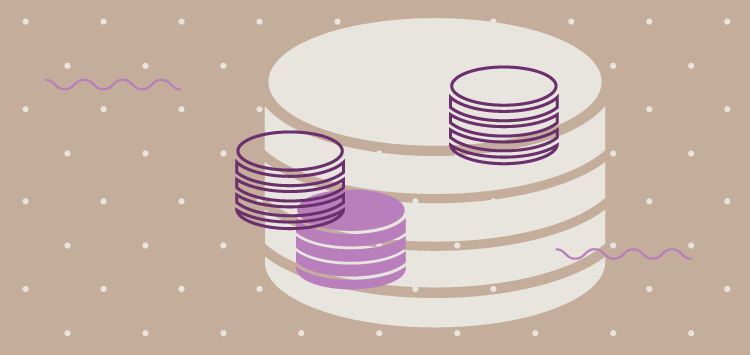🗓️ Live Webinar November 9: How HealthMatch.io Used Customer.io and RudderStack to Launch Their New Business Model in 24 Hours
Blog
COMPANY
How to Implement a Successful Data Integration Strategy


Subscribe
We'll send you updates from the blog and monthly release notes.

Amey Varangaonkar
Content Manager at RudderStack
March 02, 2021
Data integration is a bit like the air we breathe – we don’t necessarily pay much attention to it, but we can’t do without it.
Integrating different systems and their data is a challenge many enterprises have faced for years. A successful data integration strategy focuses on dealing with these different systems, their complexities and ensuring a smooth flow of information across relevant collaborators. A successful data integration strategy leads to effective and more accurate analysis when it comes to data warehouses. Utilizing an iPaaS (Integration Platform as a Service) can have a significant and long-lasting impact in this regard.
The Four Components of Data Integration
The following four components cover the whole data integration process - from “planting the seed” to “harvesting the fruit of your labor”.
Data Migration
Data migration refers to how the data has been transferred from one location, application, or system to the other. A simple example of data migration can be the shifting of on-premise applications and storage to the cloud.
The following are the three main data migration types:
- Storage Migration refers to transferring the data from pre-existing volumes into new and modern counterparts to achieve better scaling, faster performance, and more efficient data management tasks such as cloning, snapshots, and backup.
- Cloud Migration refers to transferring data, applications, and other business elements from one cloud infrastructure to another.
- Application Migration refers to transferring an application from one environment to another.
Enterprise Application Integration
EAI, or Enterprise Application Integration, is an approach commonly used to manage the interoperability between separate systems that businesses utilize. This process requires approaching problems related to the organization's modular architecture. It also includes the following key factors:
- Interoperability: Management of different languages, data formats, and operating system components so that a connection is established without any hiccups.
- Integration: Setting a standard process to allow data flow management between different systems and applications while ensuring consistency.
- Stability, Scalability, Robustness: Ability to adjust to the implemented solution seamlessly.
Master Data Management
MDM, or Master Data Management, is a discipline focused on the cooperation between IT and the business to achieve accuracy, uniformity, accountability, stewardship, and semantic consistency of the shared data. Master data includes core attributes such as suppliers, customers, and sites, among others.
There are a few challenges regarding the implementation of an MDM strategy. These usually refer to the complexities, overlaps, governance, and setting up the required policies and ownership standards.
Data Aggregation
Data aggregation combines disparate data sources and is bifurcated into two major aspects - data warehousing and data federation.
Data Warehousing: Data Merged into a Physical Database
Data warehousing is a technology that aggregates structured data collected from one or multiple sources for effective analysis and achieving cutting-edge business intelligence. This is a very effective means to better understand a business’s overall performance given the wide range of data available for extensive analysis. Rapid access to data, improved business Intelligence, increased query, system performance, and access to historical intelligence are the benefits of a data warehouse.
Data Federation: Data Merged into a Virtual Database
This is yet another approach used to get an integrated view of your data. It creates a virtual database that doesn't store the data itself. Instead, it contains information on how and where the actual data is stored.
Data federation involves processes like cleansing, transformation, and data enrichment.
The benefits, as a result, are reduced latency, simplified BI, and replacing the ETL (Extract, Transform and Load) processes for organizations.
Three tips for a Successful Data Integration Strategy
Find the Best Data Integration Providers
There are many vendors out there with various data integration solutions that are both efficient and resourceful. Therefore, choosing the most suitable data integration solution for your business should be your number one priority.
Finding the right vendor who can overcome all the data integration challenges while implementing the right data management strategy with timely delivery and speed is the most important piece of the puzzle.
Establish a Data Governance Process
To unlock your data's full value, you should establish and implement a set data governance process in your organization. This process needs to prioritize and include managing risks, data quality, business processes, and data management as a whole.
Having a set data governance policy in place will help you improve your operational processes. Also, it will help you ensure that your data is present in the right format, with the right quality and utmost availability for your stakeholders.
Implement Data Security
Businesses in touch with the latest data integration trends also need to find a way to safely and securely connect on-premise data using different cloud applications and systems.
Taking action on this subject should be a priority, considering the large volume of data that keeps growing.
Sign up for Free and Start Sending Data
Test out our event stream, ELT, and reverse-ETL pipelines. Use our HTTP source to send data in less than 5 minutes, or install one of our 12 SDKs in your website or app. Get started.

ABOUT THE AUTHOR
Amey Varangaonkar
Content Manager at RudderStack
Recent Posts

Subscribe
We'll send you updates from the blog and monthly release notes.

Get started today
Start building smarter customer data pipelines today with RudderStack. Our solutions engineering team is here to help.
This site uses cookies to improve your experience. If you want to learn more about cookies and why we use them, visit our cookie policy. We’ll assume you’re ok with this, but you can opt-out if you wish Cookie Settings.





